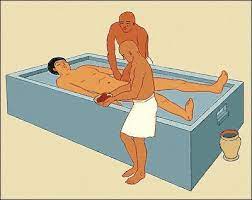INTERESTING FACTS ON THE MUMMIFICATION PROCESS !!
Mummification is the process by which a dead human or animal may be preserved for a long duration by preventing its decomposition. It can occur naturally or it can be done intentionally. The mummification process is usually associated with ancient Egypt though there are numerous cultures around the world which have practiced it. In Egypt, the process was important due to their religious belief that the soul reunited with the body in the afterlife. They developed elaborate techniques to preserve their dead which were so efficient that their mummies are preserved even after thousands of years.
In this article, we primarily look at the mummification technique of the ancient Egyptians and list out the reasons why it was so successful in preserving their dead. We also see how mummification occurs naturally and which other cultures mummified their dead. Here are 10 interesting facts on the mummification process with focus on ancient Egypt.
#1 MUMMIFICATION WAS PERFORMED TO HELP THE BODY REUNITE WITH THE SOUL AFTER DEATH
The ancient Egyptians were firm believers in the afterlife. They believed that after you died, your ba (spirit) would depart your body; but only temporarily. The ba would then periodically return to your remains and for this reunion to be successful the body needed to be intact. This reunion was the start of your journey in the afterlife which was filled with numerous challenges ahead. Mummification was thus required to preserve your body so it could reunite with your spirit and start your afterlife.
#2 THE FIRST STEP IN MUMMIFICATION WAS REMOVAL OF INTERNAL ORGANS

As a result of various methods of study over many decades, modern Egyptologists now have an accurate understanding of how the process of mummification was carried out in ancient Egypt. The first step was to remove all internal organs from the deceased as they decay rapidly. This was extremely important to halt the process of decomposition. Firstly, special hooked instruments were inserted up through the nostrils and into the brain. From there, the brain was broken up into tiny pieces and pulled out through the nose.
#3 REMOVED INTERNAL ORGANS WERE EITHER SEALED IN JARS OR REPLACED IN THE BODY

The holes made to remove the internal organs were filled with linen. The removed internal organs were preserved separately. The stomach, liver, lungs and intestines were placed in special jars known today as canopic jars. The design of canopic jars changed over time. Some have plain lids; other depict human heads; some have their covers depicting the head of Anubis, the god of death and embalming; and some feature the four sons of the god Horus, who act as guardians of the organs in the jars. The canopic jars were were buried along with the mummy.











